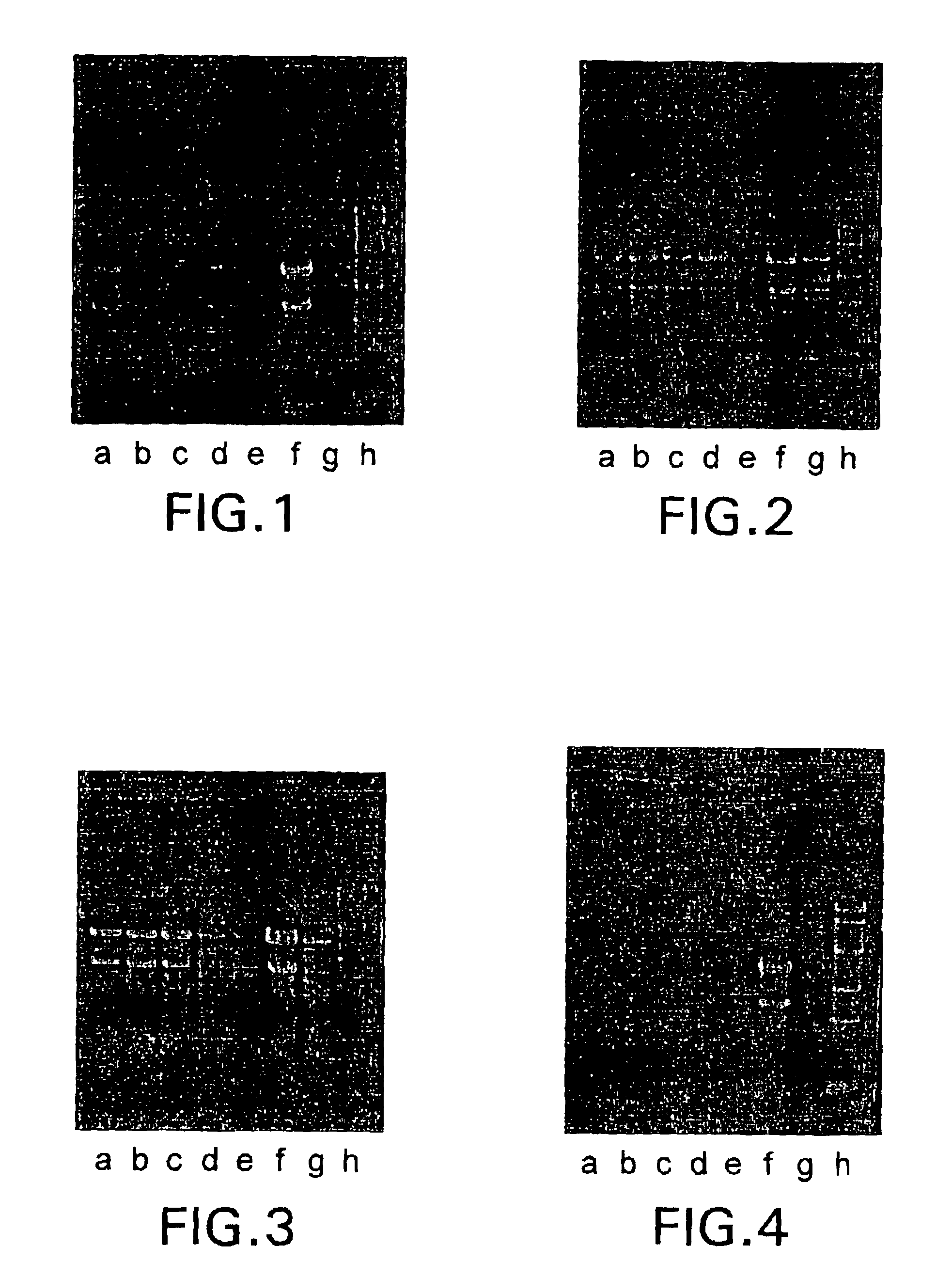Reagent for the isolation of RNA
a technology of rna and reagents, applied in the field of reagents, can solve the problems of low rna yield of commercial reagents and kits available for the isolation of rna, poor rna quality, and low yield of commercial reagents and kits. achieve the effect of high quality
- Summary
- Abstract
- Description
- Claims
- Application Information
AI Technical Summary
Benefits of technology
Problems solved by technology
Method used
Image
Examples
example 1
Small Scale Protocol RNA Isolation with Chloroform Extraction
Fresh tissue, e.g., plant leaf or root, was ground to a powder in liquid nitrogen. Dried seed was ground at room temperature. All ground plant material was stored at −70° C. To 0.1 g of ground tissue was added 0.5 ml of the present RNA Isolation Reagent (e.g., 20% 2-mercaptoethanol formulation). The sample was mixed until the ground tissue was thoroughly re-suspended, and then let stand for 5 minutes at room temperature.
The sample was centrifuged for 2 minutes at 12,000×g in a microcentrifuge. The supernatant was transferred to an RNase-free tube. A 0.1 ml aliquot of 5M NaCl was added to the supernatant and the sample was mixed. An aliquot of 0.3 ml of chloroform was added and mixed. The sample was centrifuged at 4° C. for 10 minutes at 12,000×g to separate the phases. The aqueous phase was transferred to an RNase-free tube, and an equal volume of isopropyl alcohol was added. The sample was mixed and let stand at room temp...
example 2
Small Scale Protocol With RNA Cartridge Purification
Fresh tissue, e.g., plant leaf or root, was ground to a powder in liquid nitrogen. Dried seed was ground at room temperature. All ground plant material was stored at −70° C. To 0.1 g of ground tissue was added 0.5 ml of the present RNA Isolation Reagent (e.g., 20% 2-mercaptoethanol formulation). The sample was mixed until the ground tissue was thoroughly re-suspended, and then let stand for 5 minutes at room temperature.
The sample was poured onto a Concert Homogenizer and centrifuged for 2 minutes at 12,000×g in a microcentrifuge to clarify the RNA extract. To the flowthrough was added an equal volume of guanidinium isothiocyanate and ethanol, and processed through the Concert RNA cartridge, washed, and the RNA was eluted with water, according to the protocol provided by the manufacturer.
example 3
Large Scale Protocol for Isolating RNA from Plants
Fresh tissue was ground to a powder in liquid nitrogen. Dried seed was ground at room temperature. All ground plant material was stored at −70° C. To 1 g of ground tissue was added 5 ml of the present RNA Isolation Reagent (e.g., 20% 2-mercaptoethanol formulation), mixed until the sample was thoroughly re-suspended, and let stand for 5 minutes at room temperature. The sample was centrifuged at 4° C. for 5 minutes at 2600×g in a tabletop centrifuge. The supernatant was transferred to an RNase-free tube, passing the solution through a 100-μm nylon sieve. A 1 ml aliquot of 5M NaCl was added to the supernatant, and 3 ml of chloroform, and mixed. The sample was centrifuged at 4° C. for 30 minutes at 2600×g to separate the phases. The aqueous phase was transferred to an RNase-free tube, and an equal volume of isopropyl alcohol was added. The sample was mixed and let stand at room temperature for 10 minutes. The sample was centrifuged at 4°...
PUM
| Property | Measurement | Unit |
|---|---|---|
| gel electrophoresis | aaaaa | aaaaa |
| v/v | aaaaa | aaaaa |
| phase separation | aaaaa | aaaaa |
Abstract
Description
Claims
Application Information
 Login to View More
Login to View More - R&D
- Intellectual Property
- Life Sciences
- Materials
- Tech Scout
- Unparalleled Data Quality
- Higher Quality Content
- 60% Fewer Hallucinations
Browse by: Latest US Patents, China's latest patents, Technical Efficacy Thesaurus, Application Domain, Technology Topic, Popular Technical Reports.
© 2025 PatSnap. All rights reserved.Legal|Privacy policy|Modern Slavery Act Transparency Statement|Sitemap|About US| Contact US: help@patsnap.com

